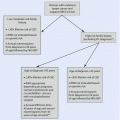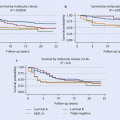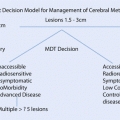© Springer International Publishing AG 2018
Lynda Wyld, Christos Markopoulos, Marjut Leidenius and Elżbieta Senkus-Konefka (eds.)Breast Cancer Management for Surgeonshttps://doi.org/10.1007/978-3-319-56673-3_5858. Breast Cancer Survivorship: Chronic Post-operative Pain and Sensory Changes
(1)
Comprehensive Cancer Center, Breast Surgery Unit, Helsinki University Hospital, P.O. Box 263, 00029 HUS Helsinki, Finland
Keywords
Chronic painPost-operativeBreast cancerNeuropathic painAnalgesics58.1 Incidence and Risk Factors
Chronic persistent pain and sensory changes are surprisingly common after breast cancer surgery and adjuvant systemic therapy and radiotherapy. In excess of 50% of patients treated for breast cancer that may have chronic pain in the breast, axilla, upper arm or side of the chest at 1 year from surgery, and consistently in about 15–20% of breast cancer patient, this pain is clinically significant, being moderate to severe in intensity [1, 2]. Moderate-to-severe intensity pain significantly impairs the quality of life and is defined as being at least 4 out of 10 on a numerical rating scale ranging from 0 (no pain) to 10 (worst imaginable pain) [3].
Persistent postsurgical pain is also encountered after other types of surgery. The pathological mechanisms leading to persistent pain after breast cancer treatments are likely multifactorial, but the pain is often considered neuropathic [4]. Several patient-specific, surgery-related and adjuvant treatment-related factors have been associated with the development of persistent pain after breast cancer treatment.
Persistent pain after breast cancer treatment is more common in younger patients, in patients with previous chronic pain conditions, in depressed or anxious patients, in morbidly obese patients and in patients with preoperative pain in the breast, axilla or upper arm. Axillary clearance instead of sentinel lymph node biopsy alone is one of the most important risk factors for persistent pain, whereas the type of breast surgery does not seem to affect the incidence of persistent pain [1, 2, 5, 6].
The handling of the intercostobrachial nerve(s) during axillary clearance has been studied extensively with regard to persistent pain but with no conclusive results. Studies have had mixed results regarding the potential benefit of preservation or planned transection of the nerve(s) [5, 7, 8]. It may well be that even if the nerve is preserved during axillary clearance, ischemic or thermal injury may have been inflicted on it or the nerve may become impinged in the developing scar in the dissected axilla. The optimal handling of the intercostobrachial nerve therefore remains somewhat ambiguous, but it seems clear that there is no robust evidence for benefit in preserving the nerve.
Also, more severe intensity of acute post-operative pain seems a clear risk factor for persistent pain, and there is convincing evidence for radiotherapy being another risk factor [1, 7].
Stay updated, free articles. Join our Telegram channel

Full access? Get Clinical Tree







